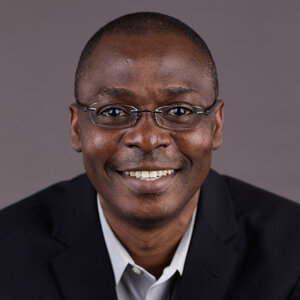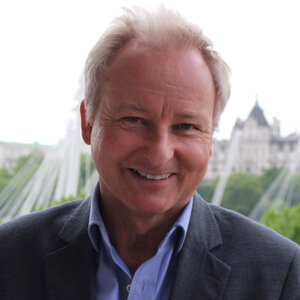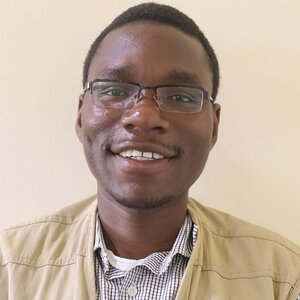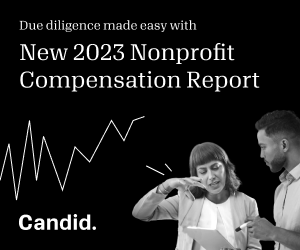We must rethink humanitarian and international development aid

I recently reconnected with a colleague based in Tigray, Ethiopia, after more than 20 months of silence due to the conflict in the region. I was relieved to hear that he and his team members were alive and, with the peace deal now in place, starting the difficult recovery and rebuilding process.
After the call, I could not help but reflect on how rapidly our world—and the work we do—is changing. We are witnessing significant increases in the frequency, distribution, duration, and complexity of acute shocks and chronic stresses from natural and man-made disasters across the world.
In the years before the conflict in the Tigray region, Ethiopia had made much progress on its development indicators—achieving the health-related Millennium Development Goals and cutting the extreme poverty rate in half between 2000 and 2008, to 21 percent. Yet it is now a fragile state and a recipient of humanitarian assistance. In addition to the armed conflict, Ethiopia, along with its neighbors in the Horn of Africa (Kenya and Somalia), is facing an unprecedented sixth year of drought, which is reversing development gains, creating a severe food crisis for more than 20 million people, exacerbating chronic conflict and ongoing economic pressures, and displacing more than a million people.
Unfortunately, such crises are happening in many other locations where international development organizations like Pathfinder, the one I work for, continue to serve. These crises are both acute and compounded by other protracted, overlapping global crises, including climate-induced natural disasters, forced migration, the COVID-19 pandemic, and other political and economic stresses.
To better mitigate these crises, we must address a structural issue: International development programs meant to deliver impact over the long term and humanitarian programs meant to respond to crises and emergencies with short-term assistance have always been operated, funded, and delivered separately. This must change now. Communities experiencing multiple shocks and stressors simultaneously have needs that transcend the humanitarian and development divide.
If we as a global community are to provide the resources those impacted by such crises need, we must increase the responsiveness and resilience of the international aid system. That requires a rethink of the continued dichotomy of the development and humanitarian sectors in the face of more complex, more protracted, and more frequent crises and the evident, interconnected humanitarian and development needs of the people we serve.
Increasing responsiveness and resilience of the aid system is critical if we as a global community are to handle the magnitude of resources needed to provide for those impacted by such crises. While donors are increasing their contributions, the need significantly outpaces the funding. This trend is expected to continue, with more than a billion people projected to be displaced by 2050 as a result of ecological disasters driving mass migrations and armed conflict.
We are living in a world of polycrisis, according to the Financial Times’ Adam Tooze, a world that should force us to make significant changes to the way we deliver international aid. Policy makers, international humanitarian and development practitioners, and donors must radically reform the international aid system in the long term, while immediately adapting our response as a sector and global community.
While the debate for necessary reforms—such as restructuring the United Nations Security Council and other multilateral agencies and the decolonizing of international aid—are under way, here are some quick and practical recommendations for improving efficiency and effectiveness of aid delivery and mitigate the suffering of those impacted:
- Increase investments at the nexus of humanitarian and development aid by enhancing constructive collaboration and coordinating humanitarian and development investments and actions, ensuring that programs are informed by local needs and realities. Such investments should place a greater and more robust emphasis on strengthening communities and systems, implementing risk-informed programs, ensuring greater community participation, and responding early to address immediate needs, while concurrently addressing vulnerabilities and building resilience.
- Accelerate action toward implementing locally led development agenda by increasing accountability and delivering on commitments such as the Grand Bargain and USAID’s Locally Led Development targets. As reported by the Global Humanitarian Assistance Report 2022, direct funding provided to local and national actors in 2021 decreased by almost two-thirds, to the lowest volume (1.2 percent of total international humanitarian assistance) seen in the previous five years.
- Prioritize the needs of women, girls, and young people in recognition of their vulnerability and resourcefulness. Women and young people are disproportionately impacted by crises and are typically among the first responders when disasters strike yet are underrepresented, and their needs are underserved in humanitarian and development coordination and programming.
Despite the many challenges facing the current development and humanitarian aid system, let us also acknowledge and appreciate the continued selfless contribution of many in the sector to bringing relief, alleviating suffering, and saving and improving millions of lives. Yes, the system is imperfect, but it is serving an important function. Now, we need to fix and fly the plane at the same time—pursue the reforms for the long-term while adapting the current system to deliver more locally led, integrated, women- and youth-centered response.
Philanthropic funders need to fund more flexible, longer-term programs that include integrated approaches, like women-led climate resilience. At the same time, they need to push for reforms of the international political, financial, and aid system to be more equitable, decolonized, and based on solidarity instead of charity.
Dr. Murtala Mai is executive vice president of Pathfinder, a global organization that strengthens health systems and advances sexual and reproductive health and rights.








Holistic, long-term thinking and action for the just transition we need